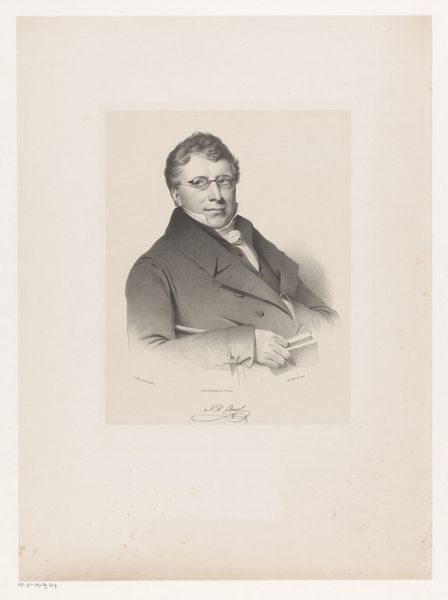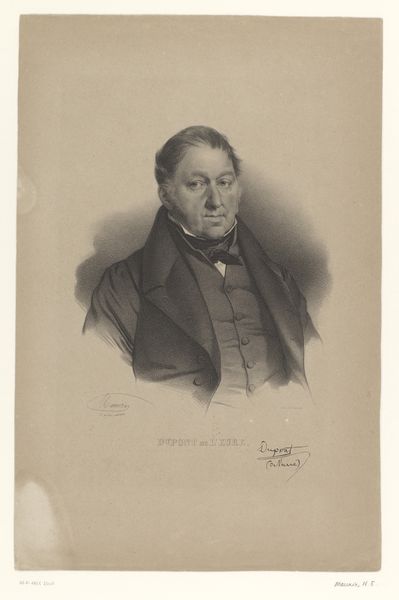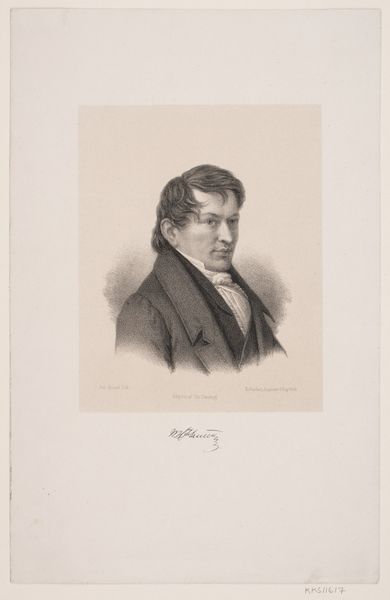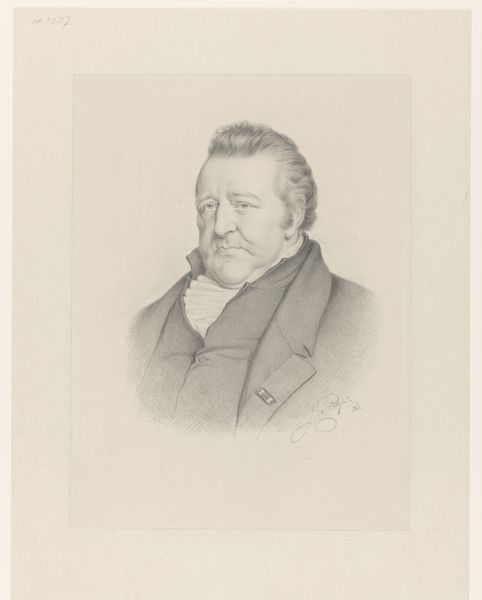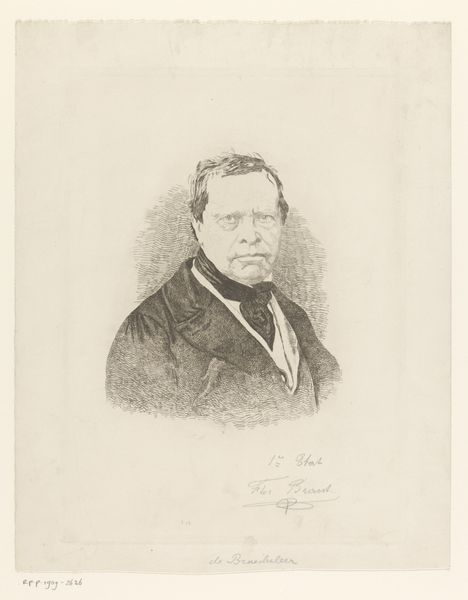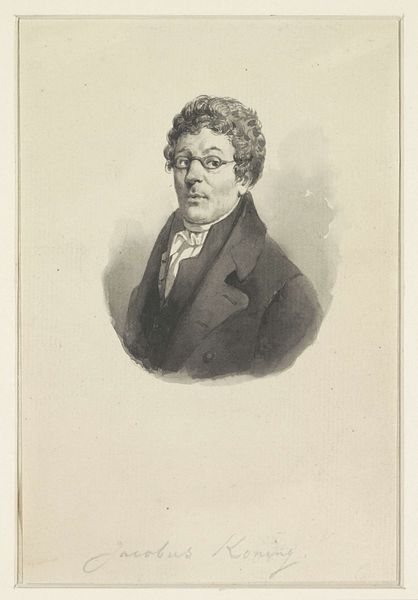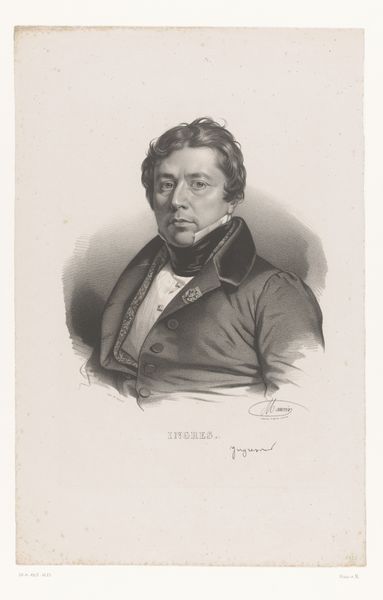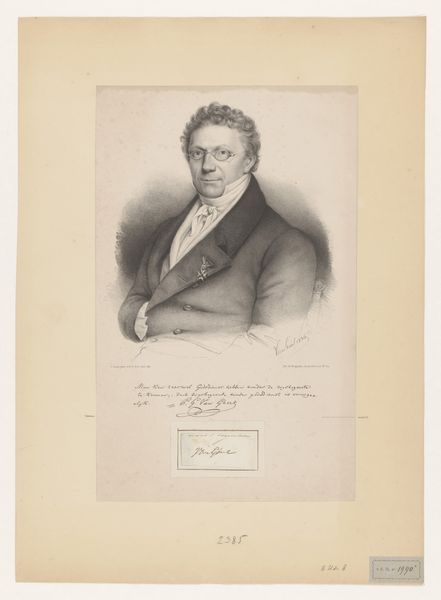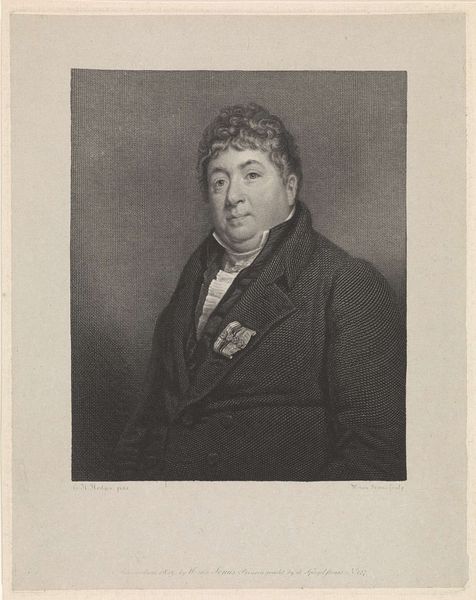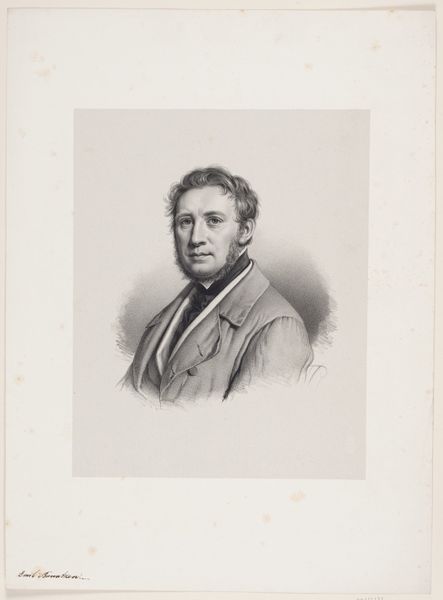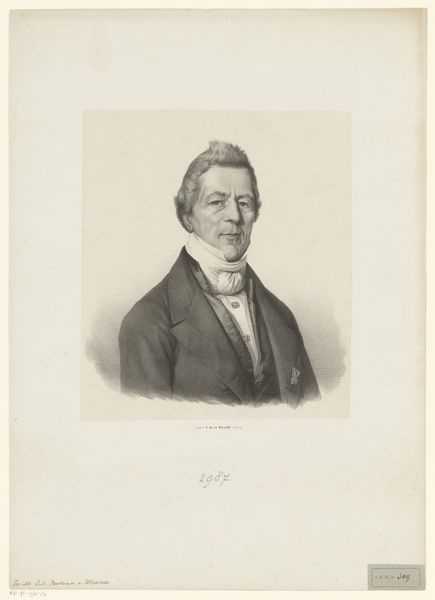
drawing, graphite
#
portrait
#
drawing
#
romanticism
#
graphite
#
academic-art
#
realism
Dimensions: height 542 mm, width 355 mm
Copyright: Rijks Museum: Open Domain
This is a portrait of J. Smits Jzn., made by H.Th. Hesselaar, sometime in the mid-19th century. It’s a lithograph, meaning it was printed from a flat stone using a chemical process. Lithography was a relatively new technology then, offering a way to reproduce images quickly and in quantity. Unlike laborious engraving, which demanded great skill and time, lithography allowed for a more direct and expressive touch, capturing the nuances of Hesselaar’s drawing. The velvety blacks and subtle gradations of tone give the portrait a richness and depth. The choice of lithography also speaks to a shift in the art world, as printmaking moved from a purely reproductive medium to a creative one in its own right. Consider this portrait in that light - as a demonstration of the power and potential of a new, industrial process. By understanding the materials and making, we can appreciate how this artwork sits at the intersection of craft, design, and materiality.
Comments
No comments
Be the first to comment and join the conversation on the ultimate creative platform.
